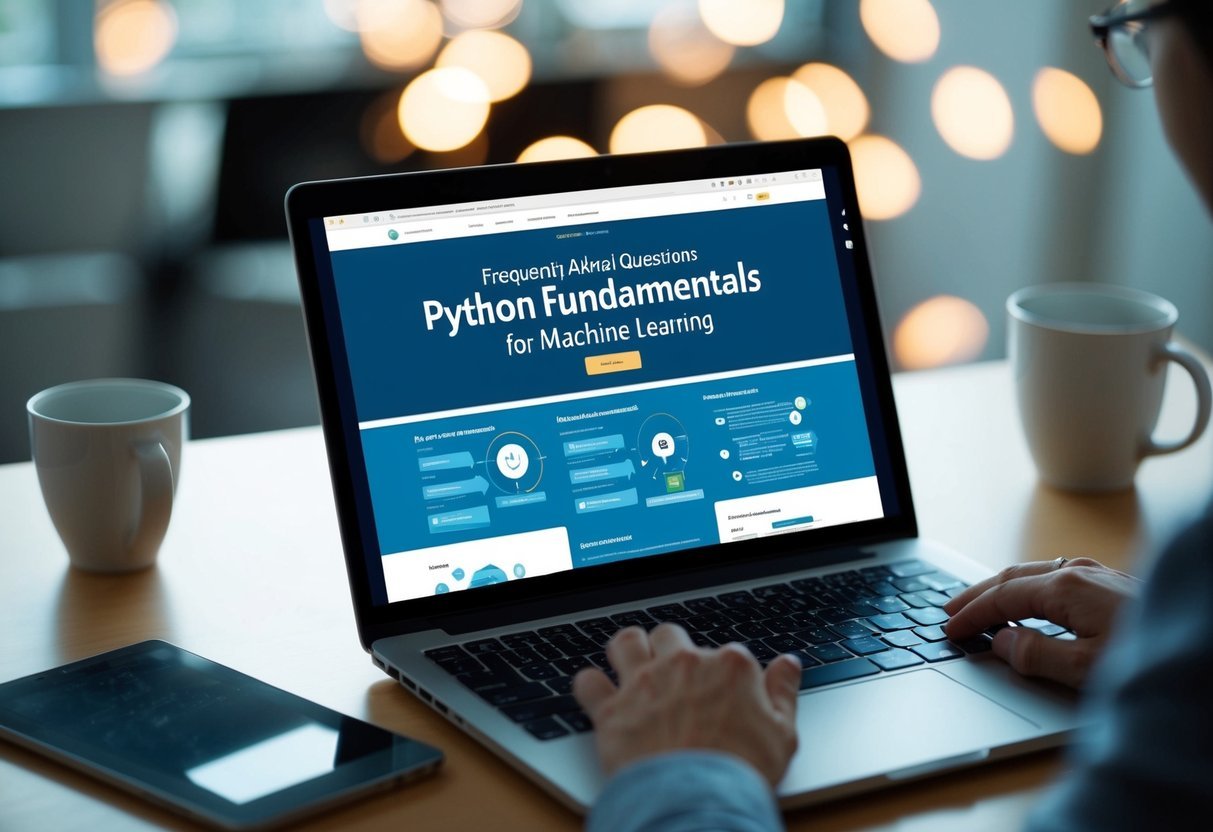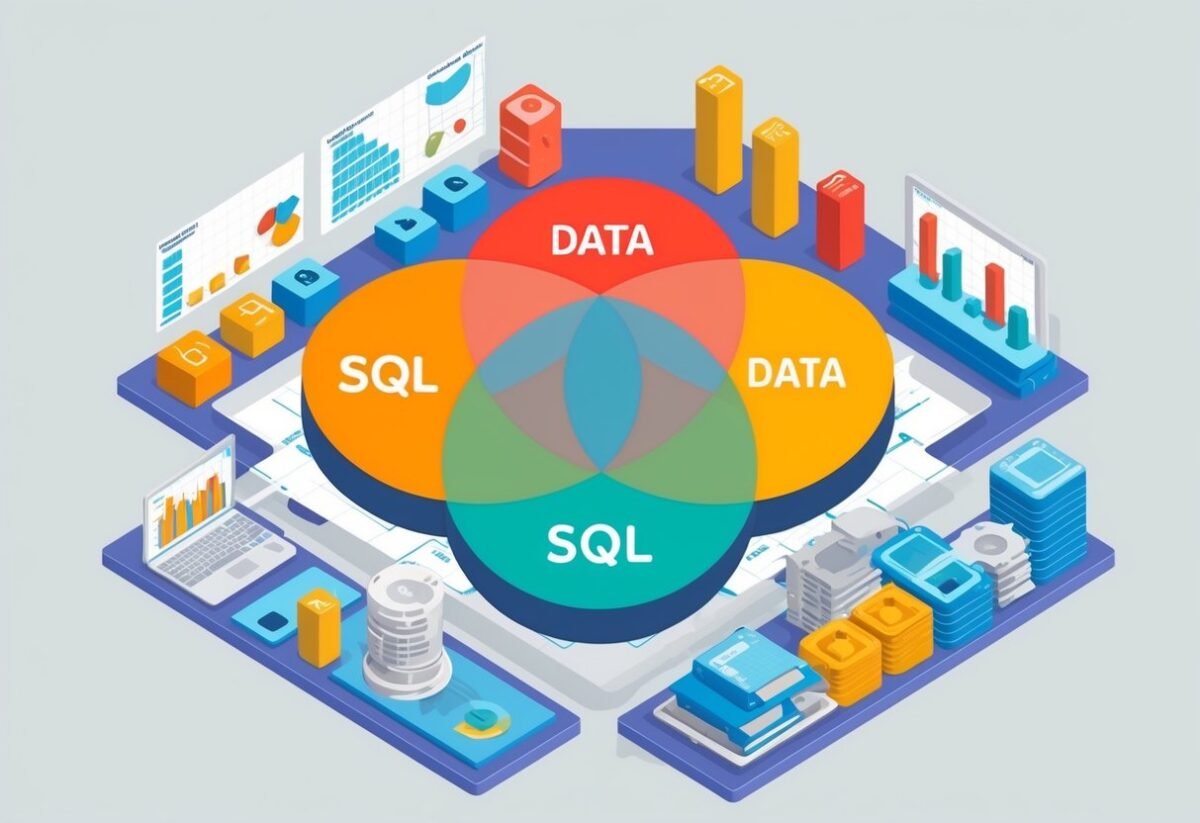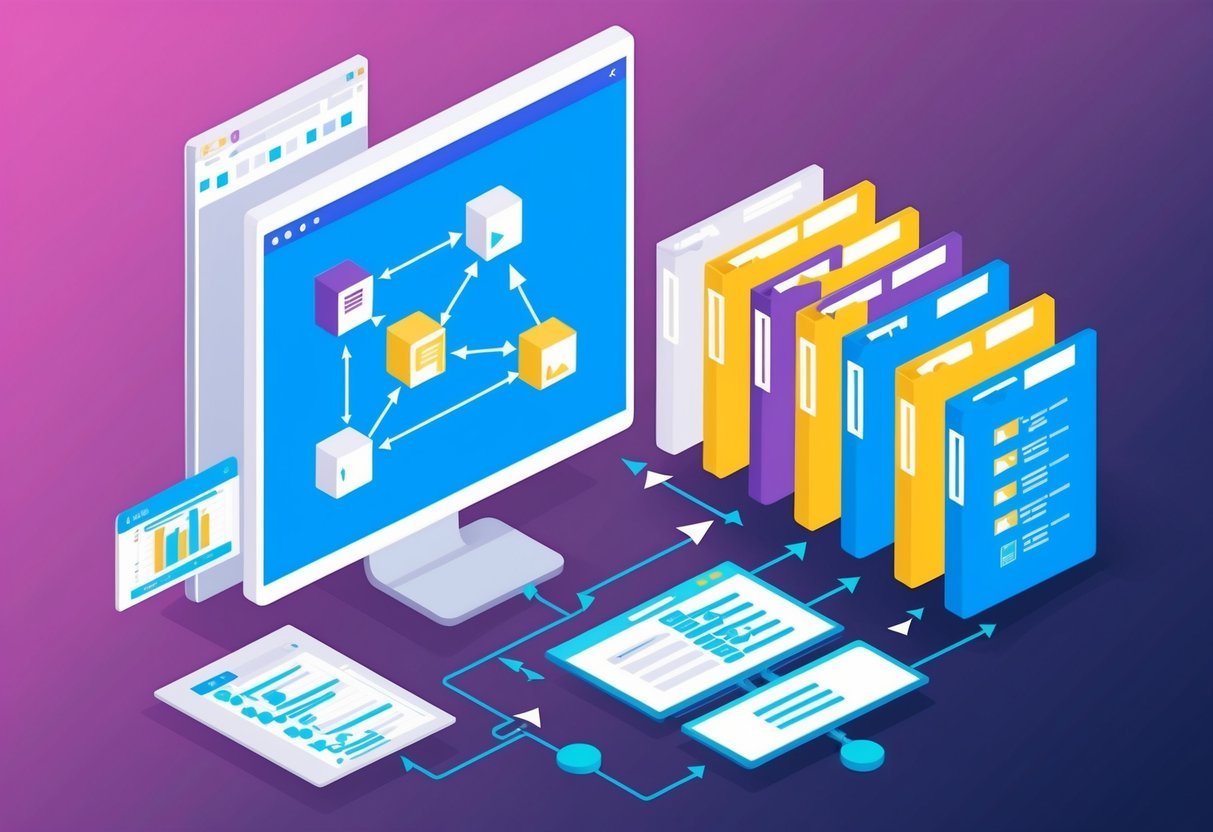Understanding Hashing
Hashing plays a key role in organizing and securing data. It uses special functions to transform inputs into specific codes, ensuring quick access and strong protection.
This section outlines what hashing is and why it matters in technology today.
Definition of Hashing
Hashing is a method that converts input data of varying sizes into a fixed-size output called a hash code. The process uses a hash function to achieve this. Each input maps to a unique code, acting like a digital fingerprint.
The hash code is stored in a data structure, making it easy to find and manage data.
Key methods include static and dynamic hashing, which offer different ways to handle data efficiently. In static hashing, the bucket number remains constant, while dynamic hashing changes with the data size. This balance between stability and flexibility is essential for managing vast amounts of data effectively.
Significance in Computing
Hashing is crucial in computing for data security and management. It not only speeds up data retrieval but also protects data from unauthorized access. This is vital when considering cybersecurity measures, where the unique hash code prevents exposure of the original data.
In databases, hashing optimizes storage by reducing the time needed to access data. Through hashing, systems like databases quickly locate records using keys.
This is important as it ensures rapid access and retrieval, which is necessary for maintaining performance as data volume grows. Hashing serves as a backbone in memory management, ensuring resources are used efficiently and securely.
Basics of Hash Functions
Hash functions are mathematical formulas used to convert data into a fixed-size value, known as a hash value. These functions play a critical role in various applications, from cryptography to data structures like hash tables.
Characteristics of Hash Functions
Hash functions should be fast and efficient. They take input data and produce a hash value quickly. This speed is essential for performing multiple hashing operations in real time.
It’s important for a hash function to be deterministic. This means the same input should always produce the same hash value. Without determinism, retrieving stored information would be unreliable.
Good hash functions distribute hash values uniformly across the available range. They reduce chances of collisions, where two inputs produce the same hash value. Using a hash function that incorporates prime numbers often enhances distribution.
Creating Hash Values
Creating hash values involves executing the function on input data to obtain a distinct result. The process uses algorithms to transform data like text or numbers into a hash.
For instance, a simple hash algorithm could multiply each character by a fixed number.
Key techniques include modulo operations, where the input is divided by a prime number, and the remainder forms the hash value. This method ensures that the hash value fits within a specified range.
Some hash functions include cryptographic varieties, which add security features to provide tamper-proof hashing ideal for sensitive data. They are often more complex but crucial for secure operations.
Data Structures for Hashing
Hashing is an efficient method for storing and retrieving data, allowing quick access to information. Key elements include hash tables and arrays, which work together to enable these operations.
Overview of Hash Tables
A hash table is a central data structure used in hashing. It uses a function to transform input data, known as keys, into indices. These indices determine where data is stored in an array. This process facilitates quick data lookup, insertion, and deletion.
Hash tables are effective because they support constant time complexity on average for these operations, often represented as O(1). Keeping collisions minimal is crucial, often managed through techniques like separate chaining or open addressing, which ensure data integrity.
Array Data Structure and Hashing
Arrays serve as the underpinning structure for hash tables. In this setup, an array acts as a container where hash functions map keys to specific indices. The array is essential for holding the mapped data efficiently.
Each index derived from the hash function points to a location in the array where the actual data is stored. This allows the hash table to leverage the array’s properties for speed. Arrays ensure that data can be accessed in a predictable and efficient manner, supporting the rapid retrieval that hashing is known for.
Algorithm Complexity
When examining algorithm complexity in hashing, it’s essential to consider both time complexity and the use of Big O notation. These aspects play a crucial role in evaluating the efficiency of hash-based techniques.
Understanding Time Complexity
Time complexity is a measure of the time an algorithm takes to complete as a function of the length of the input. In hashing, operations like insertion, deletion, and search aim for constant time complexity, also known as O(1) time. This means the operation’s duration doesn’t change with the size of the data set.
Hash tables are effective because they allow quick access to elements. This efficiency is achieved through a process where hash functions map input data to particular locations in memory.
While O(1) is the ideal scenario, collisions can occur, requiring extra handling. Techniques like chaining or open addressing help manage these collisions, maintaining efficient performance.
Big O Notation and Hashing
Big O notation describes the efficiency of algorithms in the context of how their run time or space requirements grow as the input size grows. In hashing, the goal is to keep operations at O(1) for tasks like searching or inserting data.
Though hashing strives for O(1), practical performance can vary. Collisions and load factors might influence actual performance, sometimes resulting in linear time complexity, or O(n).
By using collision resolution techniques, hash tables can still provide efficient operations. Understanding the balance between theory and practical application is crucial in leveraging hash tables effectively. For more information, you can explore topics about time complexity at OpenGenus IQ.
Collision Handling
In hashing, collisions occur when two keys produce the same hash value. Effective collision handling is necessary to maintain the efficiency and performance of hash tables.
The Concept of Collisions
Collisions in hashing happen when the hash function assigns the same index to multiple keys. This can lead to data being overwritten or lost.
Consider a simple hash function like “key mod 5.” If keys such as 12 and 22 are used, both will map to the same index, causing a collision.
Hash collisions are a critical issue in data structures that use hash tables. Handling them effectively ensures that each key can be uniquely accessed even if it shares a hash value with another key.
Strategies for Collision Resolution
Several techniques are used to handle collisions. Separate Chaining is a popular method where each index has a linked list to store collided keys. This technique allows unlimited elements to be added, as each new collision is simply appended to the existing chain.
Another approach is Open Addressing, which finds an alternate empty slot for the new element, such as through linear probing or quadratic probing.
Additionally, Cuckoo Hashing uses multiple hash functions and relocates keys as needed to avoid collisions. Each strategy has its pros and cons, and the choice depends on the specific needs of the application, such as speed and memory usage. More on these methods can be found in articles like those on collision resolution techniques and separate chaining.
Advanced Hashing Techniques
Advanced hashing techniques enhance the efficiency of storing and searching data in hash tables. These methods focus on addressing collisions and improving retrieval speed.
Chaining and Open Addressing
Chaining involves handling collisions by storing several elements that hash to the same index in a linked list or another data structure. This allows multiple keys to exist at a single index. Chaining is simple and can handle a varied number of keys well, but it may require extra space for pointers.
Open Addressing tackles collisions by probing for alternative slots. When a collision occurs, the algorithm searches other spots in the table for an empty slot. It can handle the same number of elements as the array size, but might degrade in performance as the table gets fuller.
Probing Methods and Double Hashing
Linear Probing involves searching for the next available slot linearly. If a collision occurs, it moves step by step until an empty spot is found. This is usually fast when there are few items, but can lead to clustering as it groups keys together.
Quadratic Probing reduces clustering by jumping positions based on a quadratic function. Instead of stepping linearly, it calculates the next position using a quadratic function, slowing down the formation of clusters.
Double Hashing uses another hash function to calculate the step size each time a collision happens. By relying on a second hash, double hashing spreads elements more evenly and avoids the clustering problem typical in linear and quadratic probing. This method offers a balance of speed and distribution efficiency.
Hashing in Cryptography
Hashing plays a crucial role in protecting information in digital systems. It is widely used not only for securing data through encryption but also ensuring authenticity via digital signatures.
Encryption and Hashing
Encryption transforms data into a different format using algorithms and keys, making it unreadable to unauthorized users. On the other hand, hashing converts data into a fixed-size string, known as a hash, which can help in verifying the integrity of the original data.
Cryptographic hash algorithms like SHA-256 and MD5 are important because they make it computationally hard to reverse-engineer the original data. Hashes are unique to the data input, meaning any change in the original data results in a completely different hash.
This feature makes hashing essential for confirming that data has not been tampered with, thus enhancing security in various applications.
Digital Signatures and Data Security
Digital signatures use hashing to ensure that messages or documents are authentic and have not been altered. The process involves encrypting a hash of the message with a private key, creating a unique signature.
When a recipient receives a message, they can use the sender’s public key to decrypt the hash and verify its authenticity.
If the computed hash from the received message matches the decrypted hash, the message is proven to be intact and from a legitimate sender.
This process is essential for data security and non-repudiation, preventing senders from denying their involvement in a transaction. Digital signatures are crucial in various fields, including financial transactions and secure communications.
Hashing in Databases
Hashing plays a crucial role in databases by enhancing data retrieval and management. It involves using hash functions to map data, which streamlines processes and boosts efficiency. The two main areas where hashing is vital include indexing for quicker access and its application within database management systems.
Indexing and Fast Retrieval
Hashing is widely used in databases to create hash indexes, which improve data retrieval speed.
When data is fed into a hash function, it generates a unique index that directs the database to the data’s location. This process reduces search time significantly.
In cases where data collisions occur—when two datasets generate the same hash value—additional techniques like open addressing or separate chaining are implemented to resolve the issue.
This ensures data remains accessible and the system operates efficiently.
Hashing is particularly instrumental for quickly accessing large datasets, as seen in online databases and systems like e-commerce platforms.
Database Management Systems
In database management systems, hashing aids in efficient organization and management of data.
Two common methods used are static and dynamic hashing. Static hashing maps search keys at a fixed location, making it simple but less flexible.
In contrast, dynamic hashing adjusts the data mapping as the database grows, catering to expanding data needs.
This flexibility makes dynamic hashing more suitable for large or scalable databases, allowing them to handle more data efficiently.
Understanding these methods is essential to optimizing data storage and management. For further insights on these techniques, consider exploring resources on hashing in DBMS.
Specialized Hashing Approaches
Specialized hashing approaches encompass deep hashing techniques that leverage deep learning to improve performance, and methods like locality-sensitive hashing that optimize similarity search tasks.
These methods tackle various aspects of hashing, making them particularly useful in handling large datasets efficiently.
Deep Hashing and Deep Learning
Deep hashing involves using deep learning models to create more effective hash functions. These functions map data into binary codes that retain the essential similarities and differences in the original input.
Deep hashing can be either supervised or unsupervised. In supervised hashing, models learn from labeled data to improve accuracy, making it valuable for tasks like image retrieval and classification.
Deep learning models, like convolutional neural networks (CNNs), help in feature learning, extracting relevant patterns or features from data. This enhances the creation of hash codes that are more aligned with the data’s semantics.
As a result, deep hashing is widely applied in fields that require fast and accurate data retrieval, such as managing extensive image databases.
Locality-Sensitive Hashing for Similarity Search
Locality-sensitive hashing (LSH) is a technique designed for similarity search, which is the task of finding similar items in large datasets efficiently.
It works by hashing input items into several hash tables, where similar items are grouped into the same buckets with high probability. This method reduces the complexity and cost of similarity calculations compared to exhaustive search methods.
LSH is particularly known for its ability to manage high-dimensional data, a common challenge in large datasets.
Unlike traditional hashing, LSH considers the spatial closeness of items, making it suitable for applications such as document clustering, multimedia searches, and more.
Through its probabilistic approach, LSH provides a scalable and efficient solution for various real-world problems.
Hashing in Image Retrieval
Hashing is a powerful technique for organizing and searching large collections of images. It uses binary hash codes to efficiently index and retrieve images, offering a scalable solution to the challenges of managing vast image datasets.
Binary Codes and Image Indexing
Binary codes are essential for organizing large image databases. Each image is converted into a short string of bits, known as a binary hash code, which represents its features.
This process reduces the complexity of searching by allowing quick comparisons between binary strings.
Methods like supervised hashing maximize the distinction between codes, improving accuracy in image retrieval tasks.
The compact nature of binary codes significantly cuts down storage requirements, making them ideal for large-scale image datasets.
Scalable Image Search with Hashing
Scalability is crucial for modern image retrieval systems. Hashing techniques enable scalable search by mapping image features to binary codes.
This approach allows the system to handle billions of images efficiently.
Deep hashing methods, often using convolutional neural networks, generate these binary codes, capturing semantic details of images.
By converting complex image data into manageable binary formats, systems can perform rapid searches across extensive databases. This ensures that relevant images are quickly retrieved without significant computational resources.
Quantization and Hashing
Quantization plays a crucial role in the development of hash functions by converting continuous input data into discrete hash codes. This section explores the impact of quantization in creating efficient hash functions and the optimization of hash codes through quantization techniques.
Quantization in Hash Functions
Quantization is used in hash functions to transform data points in high-dimensional spaces into a reduced set of binary codes. This process helps in making the data manageable and efficient to store and retrieve.
One common method involves the sign function, which quantizes real-valued weights into binary form.
This binary representation maintains the integrity of the original data while allowing for fast similarity searches.
Quantization can be performed using different strategies, such as k-means clustering. In these methods, data is grouped, and each group is represented by a centroid, which aids in the compression and representation of data into hash codes.
The effectiveness of quantization depends on how well it preserves the nuances of the original data during the transformation process.
Optimizing Hash Codes with Quantization
Optimizing hash codes is essential for ensuring high retrieval performance.
Quantization-based strategies focus on minimizing the error between the original and quantized data. An integrated learning model is sometimes used to achieve this.
It generates hash codes without specific quantization loss, enhancing the efficiency and accuracy of retrieval tasks.
Variable quantization methods adjust the granularity of quantization based on data characteristics, thus optimizing storage and processing costs.
Advanced techniques, like double-bit quantization, can improve code efficiency by refining the representation of data points in the binary space.
These methods are tailored to achieve a balance between compression and accuracy, ensuring precise and fast data retrieval in large-scale systems.
Frequently Asked Questions
Hashing serves as a critical component in various domains, from data structures to cybersecurity and programming languages. It offers efficient data retrieval and protects information by transforming it into unique values.
What are the benefits of using hashing in data structures?
Hashing allows for fast data retrieval by using a hash function to map keys to specific indices in a hash table. This efficient mapping enables operations like search, insert, and delete to be performed in constant time O(1).
How do different hashing algorithms improve data security?
Hashing algorithms convert data into a fixed-size string of characters, known as hash values, which protects the original data. In cybersecurity, these algorithms are critical in ensuring data integrity and security, as they make it difficult to revert back to the original input information.
What is the role of hashing in database management systems?
In database systems, hashing is used to quickly locate data without having to search every record. It enhances performance by using hash functions to distribute data evenly within the database, ensuring quick access even as data scales up.
Can you explain the process of creating hash values in Python?
Python provides built-in libraries like hashlib to create hash values. By applying a hash function to data or strings, one can generate hash values, commonly used for checksums and password storage, ensuring security and integrity.
What are the common types of hashing techniques and their uses?
Common hashing techniques include open addressing and chaining, each with specific applications. Open addressing handles collisions within the hash table, while chaining uses linked lists to manage multiple data elements that hash to the same index.
How is hashing implemented in the C programming language?
In C, hashing can be implemented using arrays and simple functions to distribute data effectively.
Custom hash functions or libraries can be used to map data to specific indices in C. This facilitates quick retrieval and modification of data.







































